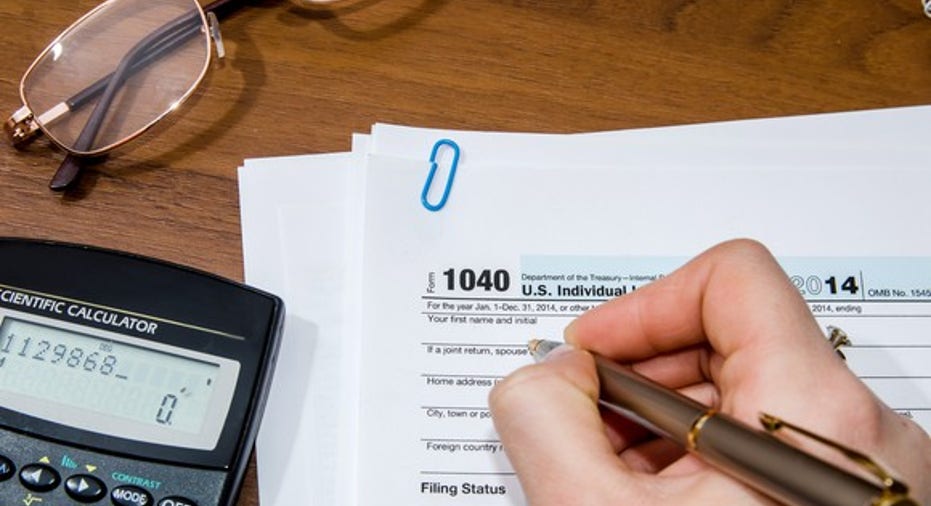What the Senate's 3.8% surtax means for American taxpayers

With Senate Republicans planning to retain a 3.8% surtax on investment income in their health-care bill, it is a good time for American taxpayers to know exactly how this tax works.
The 3.8% surtax was enacted in 2010 to help fund the Affordable Care Act, also known as Obamacare. It took effect in 2013, and this year it is expected to bring in nearly $30 billion, according to the Tax Policy Center. Republicans in the House of Representatives have voted to repeal the tax, retroactive to Jan. 1, but those in the Senate surprised many recently when they revealed plans to keep it.
This levy was billed as a tax on the richest, and often it is: More than three-quarters of its revenue comes from households earning more than $1 million. In 2017, these households will owe an average of about $37,000 each due to this tax, while those earning between $200,000 and $500,000 will owe an average of about $200 each.
The averages conceal wide variations, however. The 3.8% surtax can reach far beyond the wealthy, if taxpayers have an investment windfall. And its reach is expanding, because the trigger points aren't adjusted for inflation.
Often the tax "applies to taxpayers who aren't expecting it, and who could have lowered it with planning," says Ken Rubin, a certified public accountant with RubinBrown LLP in St. Louis.
Here is how the tax works. A flat surtax of 3.8% applies to net investment income of most married couples who have more than $250,000 of adjusted gross income (AGI). For most single filers, the threshold is $200,000.
The 3.8% levy applies only to the investment income above the threshold for single/married filers. For example, a single person with $180,000 of income doesn't owe any surtax -- even if all that income is from investments.
But say this person then reaps a one-time gain of $100,000 from selling long-held shares -- as happened to a client of Mr. Rubin. Then her income jumps to $280,000, and $80,000 of it will be subject to the 3.8% surtax. Total extra tax: $3,040.
What counts as investment income? Interest; dividends; most capital gains; certain rental and royalty income; and certain passive investment income, such as from limited partnerships.
What's not investment income? In general, income from municipal bonds, and income from investments in partnerships or S corporations, if the recipient "actively" participates as defined by law. There are also exceptions for certain types of rental income and certain capital gains, such as from the sale of a business run by the owner.
High earners may not be able to avoid the 3.8% surtax, but others can often minimize it through planning. For those worried about the tax, here are some tips:
--Don't worry about most home sales. A tax break allows most couples selling a primary residence to skip tax on up to $500,000 of profit ($250,000 for singles). Few home sellers have gains greater that this. Those that do should take note of the 3.8% tax.
--Harvest losses. The 3.8% surtax is on net investment income. One of the tax code's great benefits is that losses from one investment can offset gains from another.
--Minimize AGI. Reducing AGI, the number at the bottom of the front page of the Form 1040, can trim the 3.8% tax.
Ways to lower AGI include: making deductible contributions to tax-favored retirement plans, such as 401(k)s or pensions; making charitable contributions from IRA assets, if you're older than 70 1/2 ; taking a capital loss up to $3,000; and deducting moving expenses.
--Know how retirement-account income hurts -- and helps. Taxable payments from pensions, traditional IRAs and Social Security aren't themselves subject to the 3.8% surtax -- but they can swell income in a way that exposes investment income to it.
For example, a couple with $260,000 of income from taxable IRAs, Social Security and pensions wouldn't owe the 3.8% tax. But if $20,000 of their income is instead from dividends and capital gains, then they would owe the 3.8% surtax on $10,000 -- because that is the amount investment income above $250,000.
On the other hand, tax-free payouts from Roth IRAs don't raise taxable income and can help minimize the 3.8% surtax.
--Hold until death. As with the capital-gains tax, the 3.8% surtax doesn't apply to profits on investments held until death.
Write to Laura Saunders at laura.saunders@wsj.com
(END) Dow Jones Newswires
July 14, 2017 05:44 ET (09:44 GMT)



















